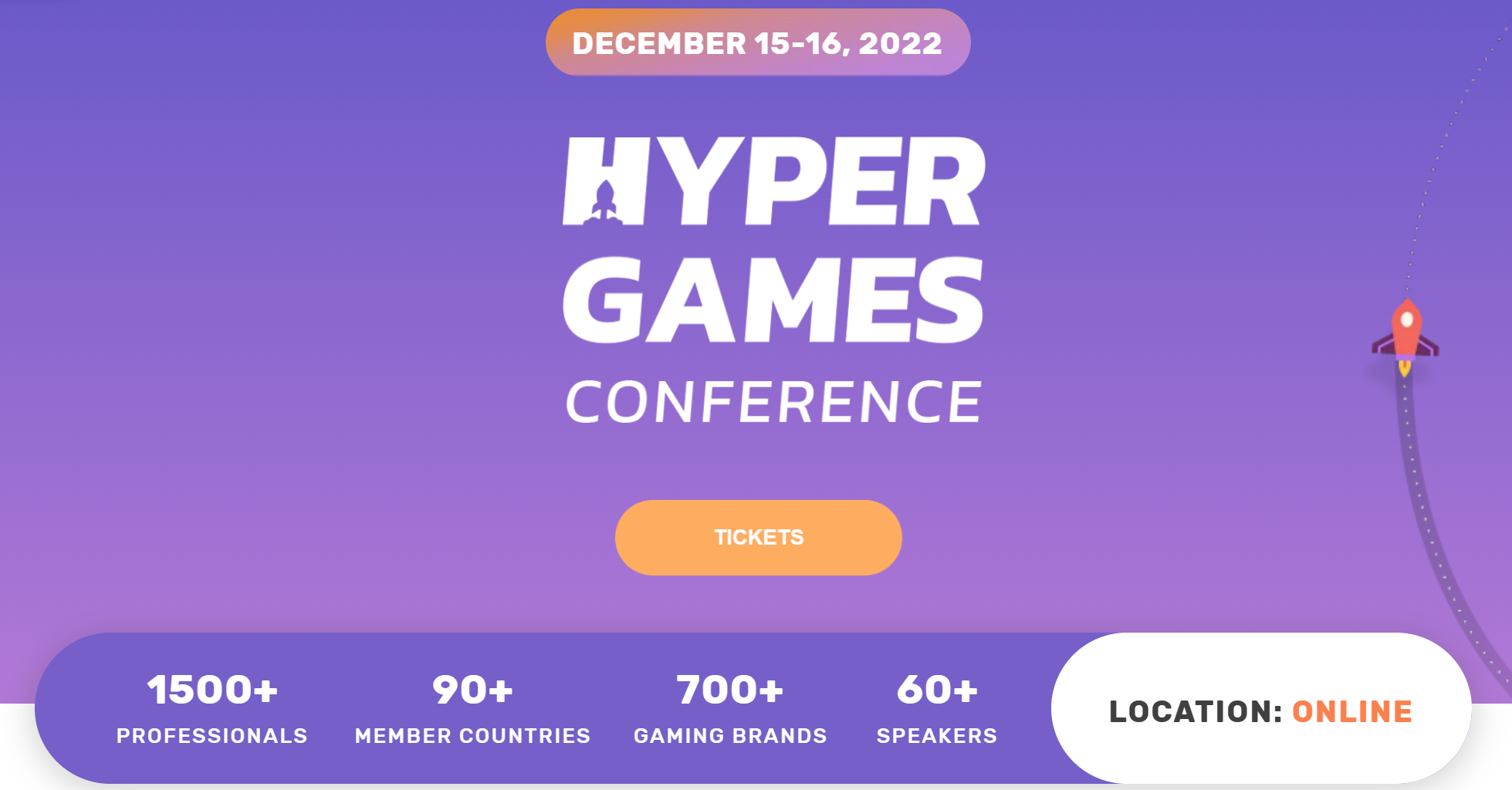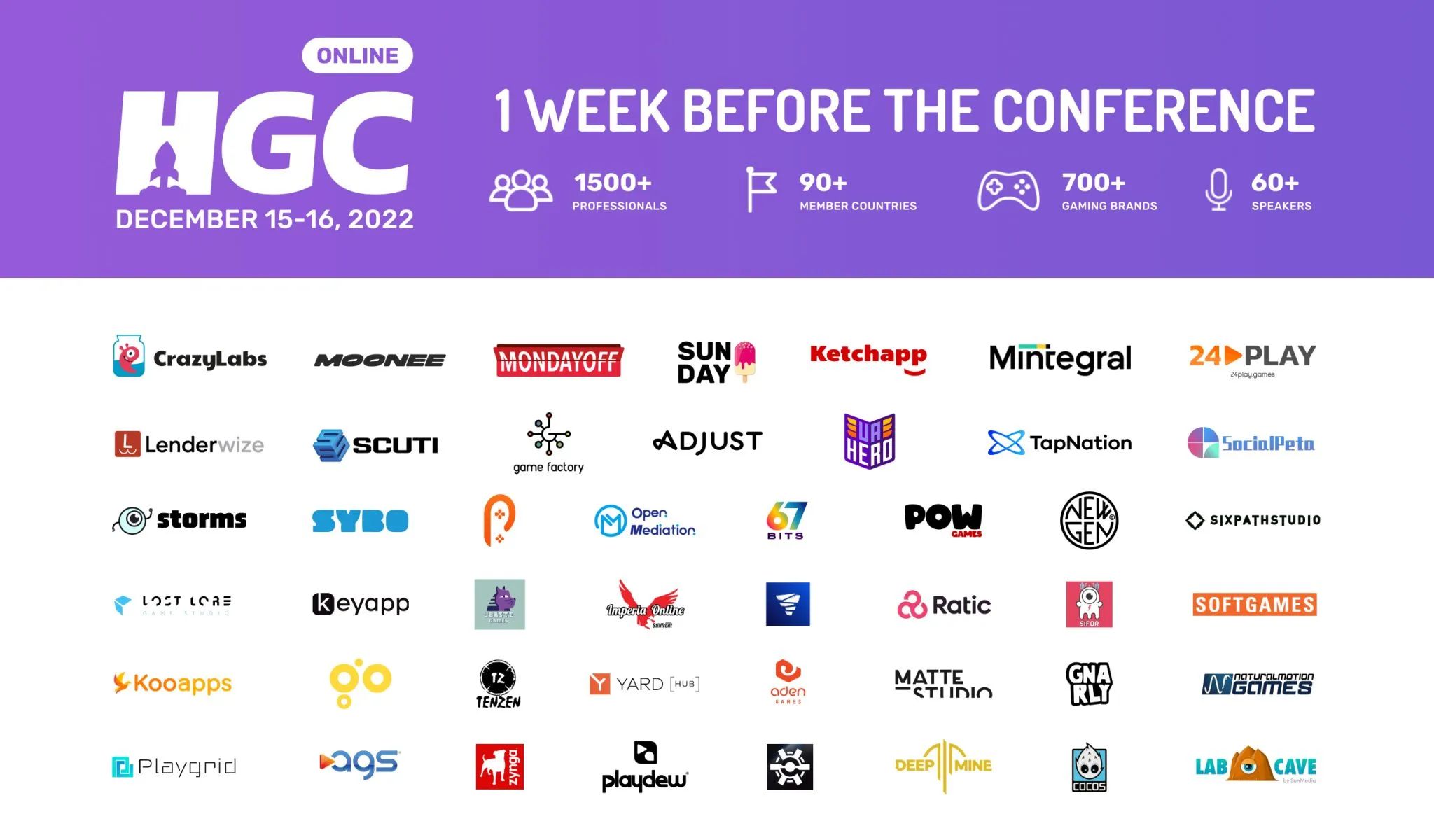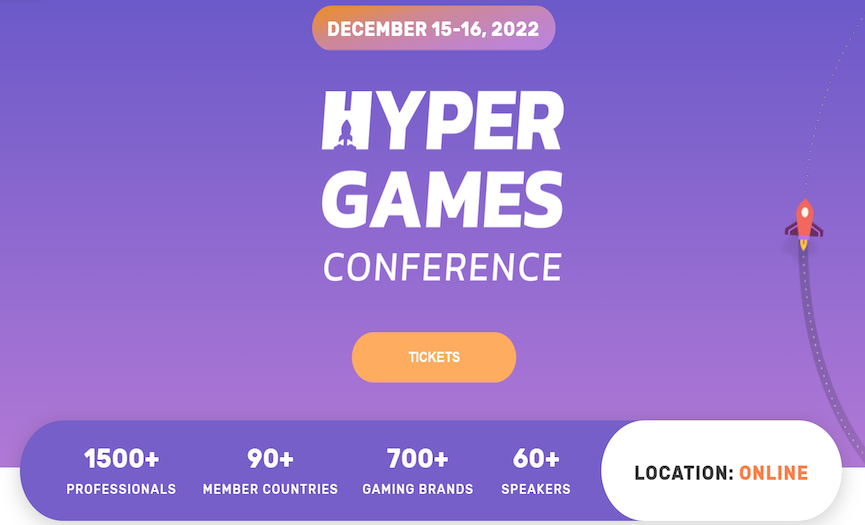
On December 15, 2022, Krystian Strauss represented OpenMediation at the Hyper Games Conference to answer 13 questions about casual games Monetisation in 2022. Let's look what he has to say.
Q: Please introduce yourself.
A: I’m Krystian Strauss, Head of Overseas Business Development at OpenMediation. Our main product is an open-source code mediation platform so developer can not only use our SaaS platform but also create their own in-house mediation using our code. Although mostly I’m involved in our XTiming Accelerator program, which is an accelerator supporting mobile game developers on the every aspect of game development and publishing. More over, we host every year Indie Clash Championship to help showcase great mobile games ideas and this year we are working closely with IGDA organising XTiming Academy, a custom-designed mentorship program that help developers create successful games with the assistance of world-class professionals. Therefore, today’s panel topic is especially close to my heart, as we help hundreds of mobile developers every year with their monetization.
Q: When should a developer start to look at adding monetization to their game?
A: Well, when we are diving the game development into 3 main phases: demo phase (or alpha game version), testing phase (or beta game version) and final product phase. It’s important to add the monetization in the second phase - testing phase. In the first demo phase, developer should focus on core elements like the core loop, gameplay, etc. Making the game fun and engaging for the players that’s the main point of this phase. But in the testing phase, it’s important to add the monetization to see how monetisation is performing and how its affecting players engagement. It’s ok to make some mistakes and test out different monetization models or tactics. Getting feedback from users and analysing data is the most important thing to decide on monetization model in the last final product phase.
Q: What key issues should they be focusing on to make sure the monetization isn’t affecting the gameplay? Should it be?
A: As usual, it really depends on the game genre and the target audience. The more hyper-casual game is, the more ads you can implement in your game, and as long the gameplay is fun and engaging, most of users won’t be bother that much the ads, even though there will be many of them. The more midcorish or hardcorish the game is, the less intrusive ads you need to add, in casual games with rich content and relatively complex gameplay, you need to be careful where and how you add ads in order to don’t affect player. Plus you should be more focus on different IAPs, subscription, live ops, season passes or even gacha.
Also, a good practise is to give players at least 3 levels of the gameplay without any intrusive ads to not effect the overall engagement. But once he started to like the gameplay, player wouldn’t mind much to watch some ads if the game is fun to play. Secondly, there are some regions that players are easily annoyed by ads but there are some regions that they are used to watching many ads. A great region where ads popularity and intesitivily is high are China or India. I was living in China for over 13 years, and as an example ads in TV where super crazy. During one TV advertisement brake advertisers used to play 2-3-4 or even 5 times the same ads , so make some research about your target market.
Q: Is there really a pushback these days to pay-to-win compared to the traditional play-to-win concepts?
A: It’s getting harder and harder to monetise through games, the cost of UA is rising rapidly but IAP or IAA revenue isn’t growing as quickly. Therefore we can see more games that are monetising more viciously, introducing more pay-to-win or increasing the difficulty of the game progressively, so player will reach certain level and then will be very hard to pass it.
In my opinion survivor.io is a great example, even thought I’m not the worst player, I’m not the best player either, somewhere in the middle, I still are dying in the very similar moment in the game. But game always give me more reasons to upgrade my character, buy some new stuff with a in-game currency, and gave me more reason to continue playing. I got to a certain level, where I cannot progress much but game is still keeping me or encouraging me to play more. After some time I will definetely purchase something to get me to higher levels. That’s a great example of how you can implement kind of pay-to-win concept without loosing your players, but encouraging them slowly to make a purchase.
You should balance your game, so both type of players can enjoy your game, the ones that won’t pay and will grind a lot, or those who are impatient and will buy some stuff to higher their chances. Making sure that gameplay is fun and addicting is a very important part.
Q: What do you tell a game developer when they say they want to build a game for a one-time price and ship it to the world?
A: You mean publish a premium game, right? Nothings it that easy, hehe! I think it’s a great idea, but it really depends what game developer wants to create. Not all games are suitable to become a premium game.
In my opinion, firstly you need to have outstanding visuals, immersive story and great sounds design. Simply saying you need to create a proper indie game that charms the players with just the trailer. The focus of workload for developers is so much different than for freemium game. Marketing and acquiring users for premium games does cost much more and you need to pay attention on social media presence. Players engagement isn’t that important from monetization perspective, as once the player buy a game you generally cannot monetise from him/her/they again. Where in freemium games, egagement is a very crucial part. Premium players made a purchase and will be quite dedicated to finish the game as they already paid for it.
No wonder that there is more successful freemium games on the market than premium games, as generally speaking it’s easier or cheaper to acquire freemium users. I personally saw a couple of premium games that disappeared in the vast market and didn’t succeed even although the game was great, because they were missing something in marketing and product promotion to target those interested premium players.
Q: What are some things you can add to a game that already is in the market that could allow you to add more monetization?
A: I think the best option for almost every type of game is to add LiveOps. In my opinion everybody knows what is it, but many still are confused how it should work. Instead of adding more content and expanding your gameplay, confusing the players with extra content, developers should focus on core elements of the game, what is the thing that make players come back to your game or play the game longer. If is it a match3 game with let the players enjoy different events that focus on connecting 3 elements together, if it is a find a difference game, give players more reasons to find differences in pictures. Give a time-limitation to an event that will encourage them to play more what they like to play.
One of my favourite mobile games - Stormbound a casual card game, have different events in different days. Beside the main card fight with other players where you can climb up in the leaderboard defeating different levels, they have implemented some cool events like Draft, where instead of building your own deck of cards, everybody are choosing cards from a specific deck that changes every week. So you are changing other players with a limited set of cards, and your abilities and strategy are very important. The monetization is quite smart too, you need an entry card to enter the Draft mode, of course you can get the entry card by watching a rewarded video or buying IAPs. In summary, it isn’t easy to implement it and you need to truly understand your users from the analytics data, but it’s worth a shot if you have a decent gameplay and loyal players.
Q: What’s the fear you have with how people monetize the game?
A: Not analysing the market and not trying different things. The market is changing constantly and something that works before might not be working now. So developers needs to adjust. Everybody see how hyper casual evolved, I’m not only taking about gameplay but also about monetization. You should constantly test new monetization models, even though you think your monetization is very mature. I saw it well in Archero, where they focused on ads at the beginning and then step by step change their focus on IAP as the game grew. You should check what your competitors are doing, what they are implementing, adjusting it to your game content and finally testing it out.
Q: How has monetization evolved over the past few years?
A: I has changed quite a lot. We can see more new ways of monetization, like season pass, gacha, and also new ad formats, like Rewarded Interstitial, Splash Ads, and many more that are still in the testing phase. We saw how everybody are trying to focus on crypto or other ways to reward players like in play2earn games that is still evolving. Recently we are seeing a big increase of IAPs, and games like survivor.io showing to everybody how it can be done well with a mature monetization models. Even hyper-casuals are implementing more IAPs and the IAP income in casual games is much bigger than any other genres. It’s definitely worth to try out this trend, adding some LiveOps content and upgrading your IAP monetization model.
But with trends, generally I follow a rule that evolution is better than revolution. It’s better to try something that is already in the market but have evolved or showed a new side or added a feature than trying something totally new. But as everything it really depends on your game content, game genre and target audience.
Q: What are common missed opportunities that developers need to take advantage of?
A: Working with many developers via our XTiming Accelerator program, I’m seeing a lot of developers that are trying many different things jumping from one tree to another. Of course it’s very important to adjust to the market and try new things. But some things might be overlooked, like not setting the ads monetization platform properly. I see many developers that are using just Unity (because it’s so easy) or using a complex platform that are just using a fraction of their functions. Not adding biddings, not setting the waterfall properly or simply adding the wrong adnetworks for your target audience can hurt the revenue. It’s not gonna change dramatically your revenue, but just by optimising it by 10-20 or 30% that might just help get your game in a positive ROI. It won’t take as much time as adding new content, like game mode, characters, props and it’s relatively simply. I’m seeing developers focus on game retention trying to reach some KPI, that’s all good, but in my opinion you need to consider monetization as well.
While creating your game idea, you need to think about game development (like the gameplay, game content, core loops, etc.) but at the same time you need also think about product positioning and monetization strategy. It should go together as you are prototyping your game, it doesn’t mean you should add a monetization to it right away, but think about what kind of monetization will you use and who are you going to target your game to. By that you can implement different game content that focuses on your target audience and understand what monetization model will fit them the most.
Q: Can you share some examples you found that became amazing money makers that you weren’t really assuming they would be?
A: I had some time ago an example of a word game, honestly I know there is like hundred or rather thousands of games like that and I didn’t really believe it can work, plus the whole UI or graphics weren’t that impressive to be honest. But while creating this game developer had in mind a specific target audience with unique language and culture. He understanded their needs and how they can monetise through them. That is what exactly developer did and it worked perfectly, the retention rate is very high even in Day30, that ensure his good revenue mostly focusing on ads but adding also some suitable IAPs.
Q: What about the opposite? Examples of failures.
A: I personally saw couple of casual midcorish games develop by small developers that had a great potential, were really fun to play, great core loop, but were missing something. And because they have limited resources and every change took a while, a time basically killed this game. It’s very important to plan out the workload and pipelines according to your abilities. You need to make sure that the project is doable and will survive. Whatever happens you will be able to develop and optimise it. I saw example when one specific designer left a company and then the developer wasn’t able to replace him, so the graphic suffered and finally they killed the project. So it’s important not even to plan the workload for the current team you have, but paying attention to future problems you might occur. Make sure you always added extra time, money or workloads for specific projects as problems always occur, and be prepare for the worst in order to finish the work.
Q: What should we expect in the new year with the challenges of 2023?
A: It’s very hard to predict future, but looking at current market we can make some basic assumptions. Firstly, I think that importance of IAP will continue to grow, especially in casual games, and way of monetization from this model with evolve as well. Of course in order to implement it properly you need to have a decent game content and gameplay that encourages people to continue to play or pay. Secondly, we will see more ad formats, as ads won’t go away but ad providers will try out new tactics. Thirdly, creating less amount of games or prototypes, but more immersive or content-rich games, as we saw from hyper-casual this year. There isn’t a many new games on the market and mature games are continuing to thrive and earn decent revenue thanks to evolving the game and adding new content. It doesn’t mean that new games will less chances to success, but you need to focus on creating more interesting and mature games, focusing on quality rather than quantity. The market is more demanding, therefore your game should adjust accordingly.
Q: Who should be making the decisions on monetization? Should this be a team effort, or should it be the game director?
A: The best would be if you have monetization specialist or a partner that can fill in this role. As I said before monetization strategy, game development and product positioning should work together seamlessly. So monetization specialist should constantly be in touch with game director to exchange ideas and collectively reach the target KPI your team set. Setting different roles in the team and let them communicate smoothly is very important. In my opinion all 3 elements are very important to a success of a game, except for those who are providing just a quick demo for publishers. These developers don’t need to worry about the monetization.
Q: Any trends that you found are making for better monetization recently?
A: Most of games are implementing hybrid monetization strategy, a great balance of IAA and IAP is very hard to reach. Deciding on the the percentage of the both elements is very important. Of course I would suggest to try out different strategies. As a trend with rising IAP income for casual games is clearly visible, this strategy is very important to try. The same it comes to LiveOps and implementing a monetization strategy to it.
About Hyper Games Conference:
Hyper Games Conference (HGC) – is an international brand that combines events of various formats and a media resource in the niche of the mobile gaming market. Hyper Games Conference, Online – is the main international conference devoted to developing, promoting, and growing the hyper/hybrid-casual games industry. Right now, it is the most famous and biggest online event (in the niche).

